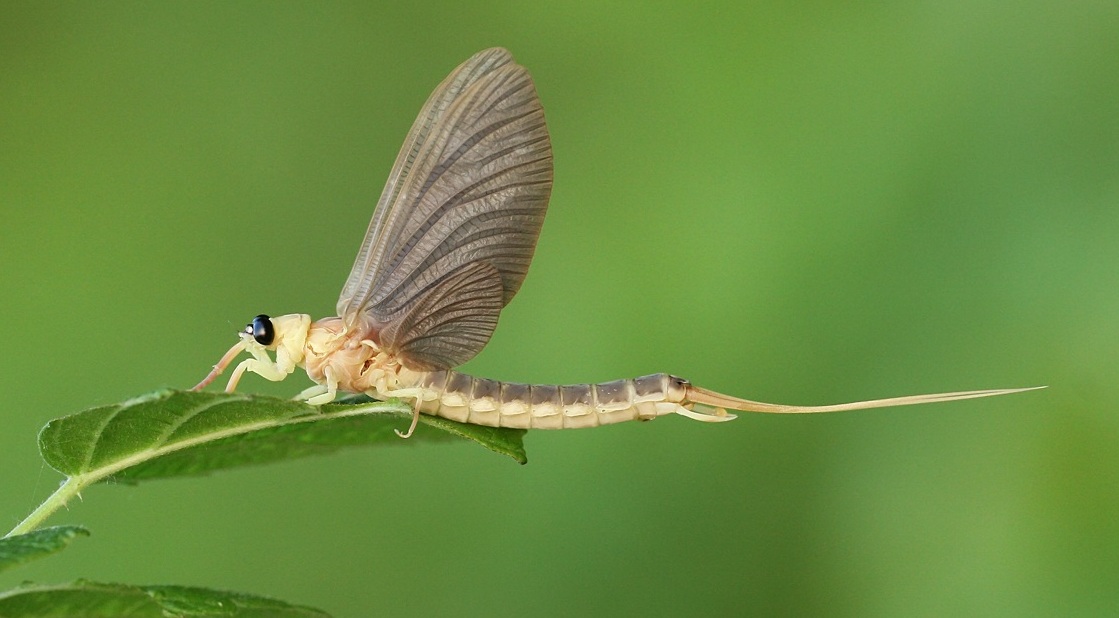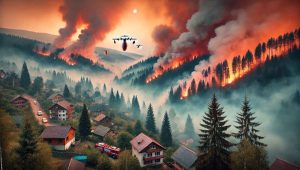The transient Tisa, named after the Tisza River in Hungary where it was discovered, is an aquatic insect species measuring approximately 12 cm in length from head to tail.
See more:
The life cycle of the transient Tisa
Unlike other insect species, the transient Tisa rarely ventures out of its aquatic habitat, typically inhabiting slow-flowing rivers, especially in the absence of fish. They often fly low and sometimes skim the water’s surface.
The transient Tisa spends 3 years of its life cycle developing as larvae in the sediment at the bottom of rivers, with larvae typically hatching in mid-June.
After hatching, male transient Tisas have only a few hours to find females for mating before they die. Consequently, male Tisas become frenzied in their search for females to mate with.

Female transient Tisas will fly 1-3 km before laying eggs over the river, typically in upstream areas, depositing eggs along their flight path.
The eggs drift downstream and hatch into larvae after 45 days, which then burrow deep into the sediment for three years. Larvae live in mud tunnels at a density of 400 tunnels per square meter.
They serve as a tasty prey for fish in the river and birds in the sky.
Transient season on the Tisza River, Hungary
Every year, as spring comes to a close, the Tisza River in Hungary unveils a spectacular natural phenomenon. Millions of mayflies descend upon the water’s surface like clouds, stirring up the otherwise tranquil river, creating a mesmerizing sight. This event lasts only 3 to 4 days and is the most beautiful time of the year on the Tisza River.
With limited time, most male mayflies have no time for courtship, and fertilization is nearly coercive, with sometimes up to 20 males mating with a single female. In fact, males may wait their turn by perching on the female.
During the nymph stage transitioning into mayflies, the river becomes a spectacular sight with millions of mayflies dancing on the water’s surface. Moreover, the riverside roads are flooded with hovering mayflies. Most of them die after mating. Therefore, by the end of the day, layers upon layers of mayfly carcasses cover the roads, sometimes requiring snowplows to clear them.
From an evolutionary standpoint, synchronizing the metamorphosis time is the best way to maintain the mayfly species. Simultaneously and within a short period, with a large number, they can easily find partners for mating. Furthermore, this reduces the risk of being wiped out by bats or birds due to the sudden, massive population increase, causing disruption for their enemies.
Today, the Tisza River and its tributaries are the only remaining habitat for the mayfly species Palingenia longicauda. However, a century ago, they were present in rivers across the European plains. According to scientists, pollution in the rivers has seriously damaged their habitat.

After 1990, when the communist government collapsed, most riverside factories in Hungary closed, and pollution levels decreased, leading to a resurgence of the mayfly population. Recently, in the Danube River, 30 kilometers north of Budapest, efforts have been made to restore this mayfly species by transferring larvae from the Tisza River. This process will be replicated for other rivers across Europe.
References:












